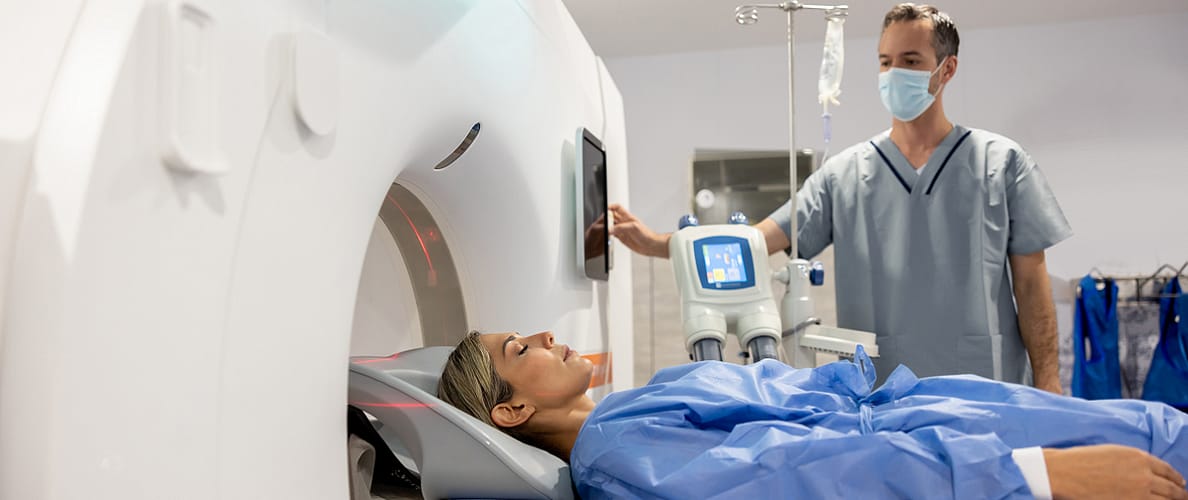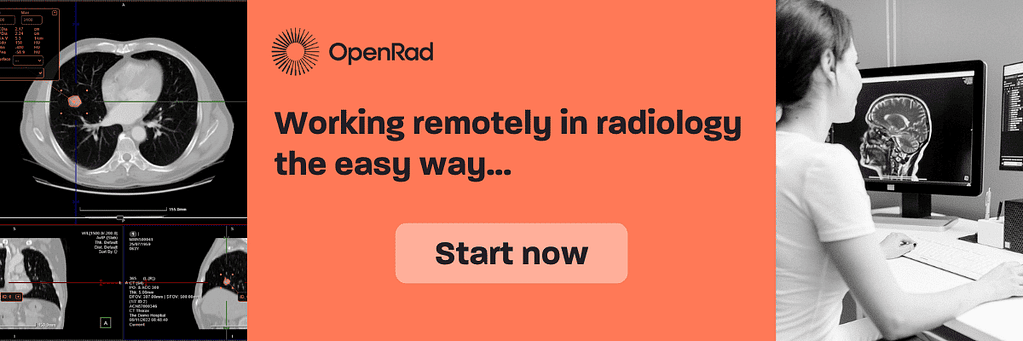Hybrid imaging is a revolutionary approach in medical diagnostics that combines two or more imaging modalities to provide a comprehensive and synergistic view of the human body. Let’s explore these helpful techniques.
📖 Author: Emmanuel Anyanwu | Alberta Health Services, Canada
By merging the strengths of different imaging techniques, hybrid imaging enhances accuracy, improves diagnostic capabilities, and aids in the detection and characterisation of various medical conditions.
The key idea behind hybrid imaging is to leverage the strengths of each imaging modality to compensate for the weaknesses or limitations of the others.
This approach allows healthcare professionals to obtain a more complete and informative picture of a patient’s health, leading to improved diagnosis, treatment planning, and monitoring of medical conditions.
Common hybrid imaging methods
Positron Emission Tomography-Computed Tomography (PET-CT)
PET-CT combines positron emission tomography (PET) and computed tomography (CT) to provide both functional and anatomical information in a single scan. PET measures metabolic activity, while CT offers detailed structural images.
Some of the advantages of PET-CT are improved cancer detection and localisation, better staging of tumours, precise treatment planning, and monitoring of therapy responses.
Single Photon Emission Computed Tomography-Computed Tomography (SPECT-CT)
SPECT-CT integrates single photon emission computed tomography (SPECT) with CT. SPECT captures gamma-ray emissions from radiotracers, while CT provides anatomical context.
Advantages of SPECT-CT are enhanced localisation and characterisation of functional abnormalities, particularly in cardiology and bone imaging.
Positron Emission Tomography-Magnetic Resonance Imaging (PET-MRI)
PET-MRI fuses PET with MRI to provide high-quality anatomical and functional imaging in a single examination. It is particularly beneficial for neurological and oncological applications.
Some advantages of the PET-MRI include reduced radiation exposure compared to PET-CT, excellent soft tissue contrast, precise localisation of abnormalities, and better assessment of brain diseases and tumours.
Ultrasound-Computed Tomography (US-CT)
US-CT combines the real-time imaging capabilities of ultrasound (US) with the anatomical detail of CT. It is primarily used for guiding interventions.
Advantages of US-CT are improved accuracy and safety in interventional procedures, enhanced visualisation of needle placement, and reduced radiation exposure compared to fluoroscopy-guided procedures.
Advantages of hybrid imaging
- Enhanced diagnostic accuracy: Hybrid imaging provides a more comprehensive view of both anatomical and functional aspects of the body, leading to improved diagnostic accuracy and confidence in clinical decisions.
- Improved disease detection & localisation: By combining multiple modalities, hybrid imaging can detect and precisely locate abnormalities, making it especially valuable in oncology for staging and treatment planning.
- Optimised treatment planning: Hybrid imaging aids in treatment planning by offering detailed information about the location and extent of diseases, allowing for more precise and personalised therapeutic strategies.
- Reduced radiation exposure: Some hybrid imaging techniques, like PET-MRI, can reduce radiation exposure compared to traditional CT-based methods, making them safer for patients, particularly in pediatric and oncological applications.
- Streamlined workflow: Hybrid imaging eliminates the need for separate scans and the fusion of results from different modalities, streamlining the diagnostic process and saving time.
Improvements in healthcare
Hybrid imaging techniques have significantly improved healthcare in various ways, including:
- Early disease detection: By providing more accurate and early detection of diseases, hybrid imaging contributes to better treatment outcomes and increased survival rates.
- Personalised medicine: The techniques enable healthcare providers to tailor treatments to individual patients, optimising therapeutic effectiveness and minimising side effects.
- Reduction of invasive procedures: Hybrid imaging assists in planning and guiding minimally invasive interventions, reducing the need for exploratory surgeries, and improving patient comfort.
- Research & drug development: Hybrid imaging is valuable for research, enabling scientists to study disease mechanisms, assess treatment efficacy, and develop new therapies.
All in all, hybrid imaging represents a remarkable convergence of technologies that have transformed the landscape of medical diagnostics.
By combining the strengths of multiple imaging modalities, these techniques have revolutionised disease detection, treatment planning, and patient care—ultimately contributing to advancements in healthcare and the potential for more targeted and effective therapies.
As technology continues to evolve, the role of hybrid imaging in medicine is likely to expand further, opening new possibilities for improved patient outcomes and a deeper understanding of complex medical conditions.
—
How do you use hybrid imaging techniques? Share your experience via the comment section below.
Want to join a great team? Check out our careers section. We are always looking for outstanding talent—from application specialist to software developers.
📷 Photo credits: daniela-mueller.com


